The Eternal City has been much on my mind lately, probably because I hope to visit there for a few days next summer, God, my finances, and the pandemic willing.
It used to be fashionable to describe Rome as like a palimpsest, a manuscript where one text has been erased to make way for a new text, but traces of the old text remain. I think that more accurately describes New York City that constantly tears itself down in order to build anew. And yet, surprising survivals stand out here and there amidst all the shiny newness. A couple of early 19th century tenements stand cheek by jowl with a luxury condo building finished yesterday. I think Kenneth Clark more accurately described Rome as a compost heap of human ambition.
New York and Rome are both cities built for visitors. They built their monuments with travelers in mind. They both see themselves as destinations, as centers of the world. New York built its prodigious towers with travelers in mind, to mark the city as a headquarters and a destination. Its skyscrapers proclaim the common faith of the whole city in the transformative power of money.
Rome is one of the oldest continuously inhabited cities in the world. Traditionally Romulus founded Rome on April 21, 753 BCE. In reality, the city is much older. The settlements on the Palatine, Capitoline, and Quirinal hills were already ancient by the time Romulus arrived, their origins going back into Prehistory. The Emperor Augustus began a project which never ended to transform a big crowded city into a world capital. Later emperors, popes, kings, dictators, and plutocrats continued that project for another 2000 years.
"I found Rome a city of bricks and left it a city of marble," said the Emperor Augustus according to Suetonius.
The Ara Pacis, the Altar of Peace survives as one of Augustus' earliest monuments to glorify the city. By the standards of later Roman emperors it's very modest in size, about as big as a modest house. That's consistent with Augustus' very cautious campaign to sell the idea of the Roman Empire to a skeptical public. And indeed, that's the point of this monument, to proclaim and justify the creation of the new Roman Empire out of the ashes of the old Republic that so recently collapsed in multiple civil wars.
The Roman Senate voted to build the Altar of Peace on July 4, 14 BCE to commemorate the safe return of Augustus from a three year tour of Hispania and Gaul (today Spain and France) and his rite of sacrifice in gratitude to the gods sometime earlier in the summer, perhaps late June. The Altar was completed and consecrated December 30, 9 BCE.
In ancient Rome as in ancient Greece and Etruria, public religious rites almost always took place outdoors around a large altar. The Altar of Peace is just such an outdoor altar for public ceremonies. It consists of the altar proper, and a sanctuary wall that encloses the altar with entrances on the east and west sides (In 1938 Mussolini changed the orientation of the Altar from east/west to north/south). The east portal had steps and was probably the main entrance. The Altar today stands about in its original location on the north side of the Campus Martius, a wide flood plain of the Tiber river where Romans used to gather for public meetings, the census, elections, and religious observances. In Augustus' day, this was outside the city along the Via Lata (today the Corso in central Rome). Augustus built a large mausoleum for himself and his family a short distance from the Altar to the north.
The east side of the altar seen in the new museum designed for it by the American architect Richard Meier completed in 2006.
The east side of the Altar with carved reliefs on the sanctuary wall of acanthus plant patterns on the lower walls and scenes from Roman mythology on the upper register.
The lavish altar proclaims abundance, prosperity, and continuity with Roman traditions in every part. Though a relatively small monument by Roman standards, it is elaborate and ambitious.
The west entrance to the Altar.
A relief from the east end of the Altar showing a scene from Roman mythology, perhaps Aeneas sacrificing swine in thanksgiving for his safe arrival at what would become the site of the city of Rome. Some scholars argue that it might show the second king of Rome Numa Pompilius who created many of Rome's institutions, especially its religious ones. Numa Pompilius built the first Temple to Janus that the Romans always kept closed in times of peace and open in times of war. The design of the Altar of Peace may recall the first temple to Janus.
A relief from the west side of the Altar that may show Tellus the goddess of the earth, or perhaps Pax the goddess of Peace, or Venus Genetrix, mother of Aeneas and the Latin people (and of the Julio-Claudian dynasty of Julius Caesar and Augustus).
The two remaining mythological panels are fragments and their reconstruction is very controversial.
From the east side, the Lupercal, the discovery of the she-wolf suckling the infants Romulus and Remus.
I think both of these panels are pure conjecture. There are not enough fragments left to determine any subject matter.
A fragment from the West end reconstructed as the goddess Roma seated on a pile of captured weapons.
These reliefs linked the creation of the Roman Empire to the religious origins of the city of Rome. They made a claim for the legitimacy of Augustus' regime as a continuation and recovery of Roman tradition.
The north wall of the altar with the acanthus pattern on the lower register and above that a sculpted frieze recreating the ceremony of thanksgiving for Augustus' safe return to Rome in the early summer of 14 BCE.
The north wall shows the beginning of a religious procession showing the lictors who guard the procession, the various "colleges" of priests and their acolytes along with members of the imperial court.
They all wear togas, a religious garment in ancient Rome that could veil the head during especially important rites. On the left in the panel above, an acolyte carries a box of incense.
Most of the heads on the north wall were heavily restored and even replaced in the 18th century.
Members of the court and officials with children who may be the children of foreign royalty in Rome as guests, or just as likely hostages.
There are a lot of children in the frieze of the Ara Pacis, perhaps signifying peace and safety. Small children rarely appear in most Roman public art and never in ancient Greek public art.
More priests on the north wall.
A fragment from the north wall today in the Louvre that shows more children.
A large part of the south wall of the Altar of Peace continuing the recreation of the religious procession of early summer in 14 BCE. Once again, acanthus plant patterns take up the lower register and the upper shows the ceremony. On this wall we see more of the imperial family and the culmination of the sculpted procession with Augustus himself making an offering of incense before the sacrifice of cattle.
The south wall shows the imperial family all individualized but to a limited extent. The identifications are all controversial. The couple with two children on the left may be Antonia and Drusus with their two sons the future Emperor Claudius and Germanicus. The other boy on the right may be the future Emperor Tiberius.
The man on the left with his head veiled is usually identified as Augustus' close friend and son-in-law Marcus Agrippa. The woman on the right may be his wife Julia the elder daughter of Augustus, or just as likely the Empress Livia.
The monumentality in all its magnificence is deliberate. It's a vision of Rome in its ideal state created out of those traditional Roman values of family, piety, and patria. The destiny of Rome ordained by the gods is fulfilled. Rome lives at peace with itself and now readies itself to bring peace and civilization to a war-torn barbaric world. The order and harmony of the gods as manifested in the stars and the workings of nature will be created on earth through Rome.
The Altar of Peace proclaims Rome's empire to be a project of secular salvation to end conflict and bring peace and prosperity to the world.
This kind of acanthus scroll pattern would have a long afterlife in Christian art as a metaphor for the Christian paradise. Here it appears as the Tree of Life in a 12th apse mosaic in the church of San Clemente in Rome.
Sacrificial cattle in procession on the altar.
The Emperor Augustus as Pontifex Maximus.
Priests and other officials accompanying the Emperor Augustus.
The badly damaged figure of Augustus himself on the center right probably making an offering incense before the sacrifice of cattle. He performs the role of Pontifex Maximus, the highest priest, instituted by King Numa Pompilius in the days of Rome's traditional foundation, a title still claimed by the head of the Roman Catholic Church, the Pope.
Augustus was very careful about the image he presented to the public. The Altar frieze shows him not as some enthroned Pharaoh receiving supplication from subjects, but as a fellow citizen performing a priestly duty as would any Roman father in the worship of family ancestors and household gods in his home. The Emperor Augustus was always careful to show himself as a first among equals, as a citizen among other citizens, and not as some enthroned demigod.
And yet the Altar does make divine claims for him, subtly joining him to Rome's origins and its gods in the imagery and design of the structure.
The acanthus pattern takes up the bulk of the sculpture on the sanctuary wall of the Altar of Peace. Scrolling acanthus plants grafted with all kinds of other plants and flowers from grapes to pomegranates to hop vines and wheat springs from single roots. Animals of all kinds crawl and perch throughout the acanthus scrollwork. Some of the best and most delightful carving is found here.
The lavishness and vitality of this pattern played its part in the themes of peace and prosperity in the Altar.
The single root from which an impossibly wide variety of botany springs.
A swan.
Grapes.
A flower, possibly a pomegranate flower.
A small frog.
A variety of plants including what looks to me like hop vine on the curl on the upper right.
More flowers on the acanthus vines.
A lizard.
A scorpion.
The decoration is a little more sparing inside the sanctuary and on the altar proper and recalls the religious function of the structure. Above is the sculpted frieze on the inside of the sanctuary wall facing the altar. It shows a stone version of temporary screens set up to indicate a sacred area. They were cloth screens decorated with the skulls of sacrificed cattle and swags of flowers and fruit.
Here is a swag of pomegranates, apples, grapes, olives, wheat, and pine cones with flowers and ribbons between cow skulls. The circular object in the top center is a patera (phiale in ancient Greece), a libation bowl for making drink offerings.
One of two volutes on the altar itself carved with more acanthus scrolls, winged lions on the ends, and a scene of sacrificing cattle.
Another view of the altar volutes.
Over time, the Altar of Peace became lost on the Campus Martius. Even before the Roman Empire officially fell in 476 CE, the city of Rome decayed and fell apart. The superb central drainage system of Rome, the Cloaca Maxima stopped working due to lack of maintenance. The Campus Martius became a flood plain once again. Successive floods over the years and centuries wrecked and buried the Altar of Peace under layers of silt.
The first fragments of the Altar came to light during construction of a palazzo in 1568. More fragments surfaced in the 18th century.
In 1909 the first excavations to recover the Altar began. Excavations were limited and came to a halt in the 1920s when they threatened a nearby movie theater.
Mussolini in the 1930s ordered the full excavation and reassembly of the Altar of Peace in time for the 2000th birthday of the Emperor Augustus on September 23, 1938. The reconstruction was very hasty with a lot of guesswork due to so many pieces still missing.
The first pavilion built in 1938 to safely house the rebuilt Ara Pacis designed by the architect Vittorio Mopurgo on orders from Mussolini.
In 2006, the Italian government replaced Mopurgo's pavilion with a new museum designed by Richard Meier.
People always wonder about Rome's decline and fall. The Roman Empire ended for the same reason that all states end. They are mortal things made by mortal people.
What is really remarkable about the Roman Empire is its success and longevity. Empires usually are ephemeral things. The globe circling British Empire didn't last two centuries. Rome's Empire lasted from the end of the Punic Wars in 147 BCE to the abdication of the last Roman Emperor in 476 CE; or if you prefer to the end of that continuity of the Eastern Roman Empire known as the Byzantine Empire in the fall of Constantinople to the Ottoman Turks in 1453. After its end, Rome cast a long shadow through history down to the present day. There were many abortive attempts to revive the Roman Empire from Justinian and Charlemagne to the Russian Tsars to the Austrian Hapsburgs to Napoleon to Mussolini.
As imperial apologias go, the Ara Pacis is one of the best. Frankly I think all empires boil down to little more than smash and grabs, stealing land and resources and reducing the people who live on that land to tenants in their own country and cheap labor. That was true of the Egyptian Empire, Alexander's Empire, the Roman Empire, the Spanish Empire, the French Empire, the British Empire, the German Empire, the Russian Empire, and the American Empire, of every empire.
And all of them justify this highly organized robbery on a grand scale by the same claims of divine mandate and historical destiny made by the Ara Pacis.





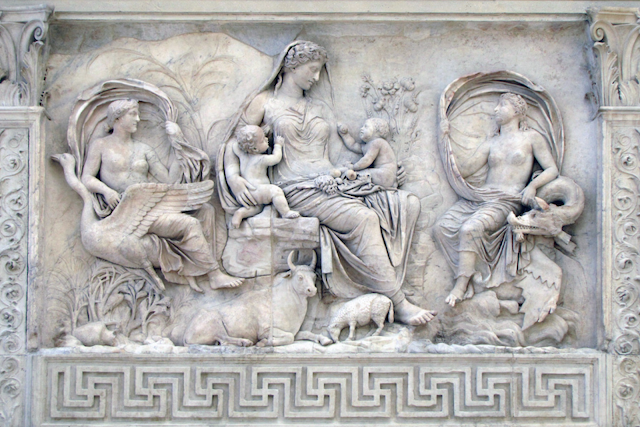




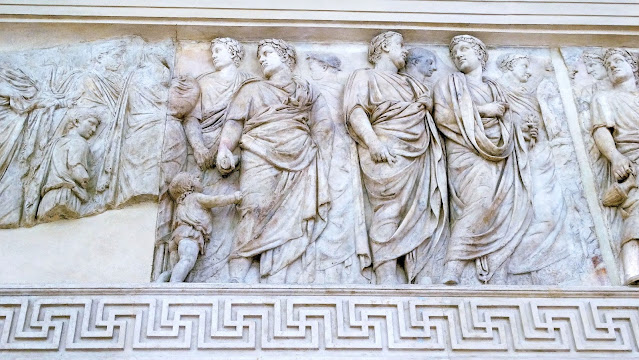







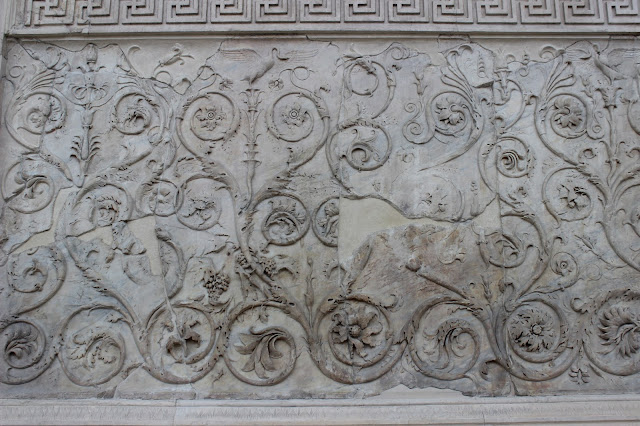
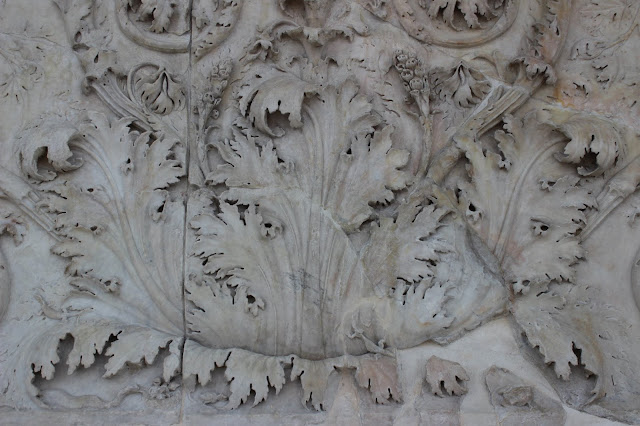

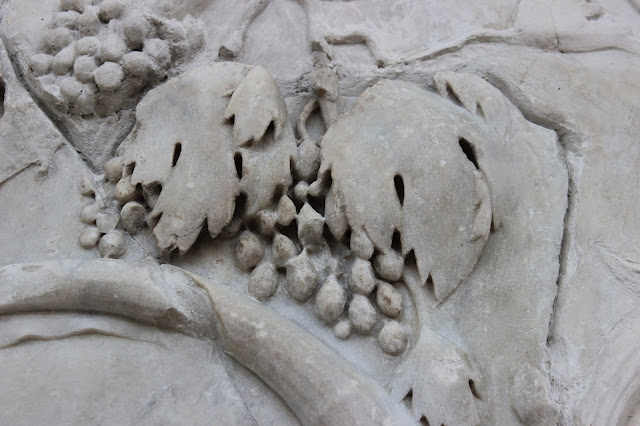







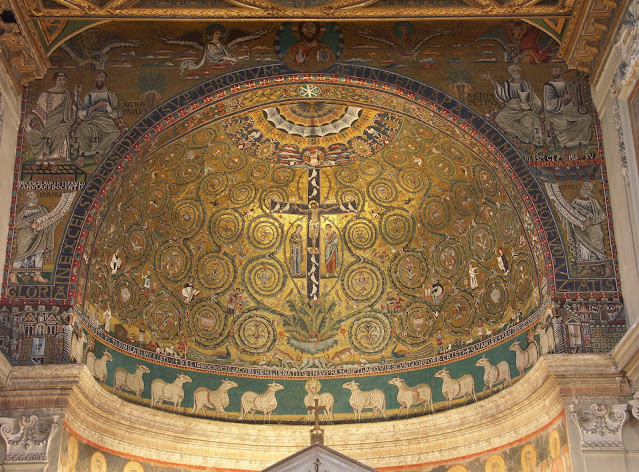








3 comments:
One of the things that amazes me is that we can not only determine when something like this was built, but the exact day in history of its dedication. How is that possible?
I also want to say I love this being on your blog instead of Facebook. I do not understand the vagueries of Facebook's newsfeed algorithm. You would have had to split this into multiple posts, and many times I would see the first or second post, but not come across the third or fourth until a day or two later. I love having this all in one place to think about and enjoy.
I think the reason we know the dates so precisely is because Augustus wrote about the Altar of Peace himself in his surviving writings and in a number of of surviving works by Greco/Roman historians such as Plutarch and Roman ones such as Suetonius and Cassius Dio.
I also think the reason the dates survive is because the Romans were very attentive record keepers where records survive.
I'm glad to come back to the blog. In the last Apollo post I bit off more than I could chew. I may still finish it, but much has been going on. It was hard to concentrate on anything except the task at hand for about a year and a half. Facebook was and still is a way to stay in direct contact with friends. For more ambitious matters, I think Blogger is still the best, and without FB's vague "community standards" vigorously enforced. As long as I can keep these blog posts manageable in size and scope, then I should be able to maintain a decent amount of posting.
Another incentive to resume the blog is that I notice on the counter for each and every post, I get more hits now than ever before since I started this blog over 10 years ago. And even though posting on this blog has been so spotty for at least 3 years. Hits do not always equal numbers of people, but even so that probably amounts to more traffic than I get on most Facebook posts.
Post a Comment